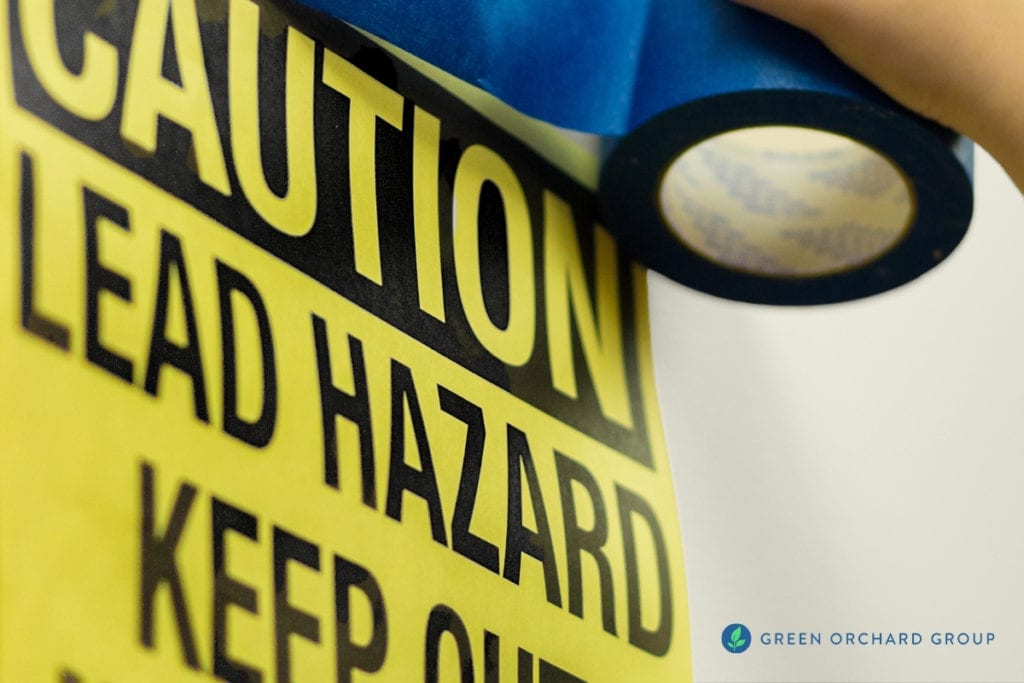If you’re living in an apartment or home built before 1978, there’s a chance that it may contain lead-based paint.
Damaged or deteriorating paint creates lead dust that can be accidentally inhaled or ingested by people nearby. Although the use of lead-based paint in residential buildings was banned in 1960 in New York City, the federal government didn’t ban it until 1978.
In 2004, NYC passed the Childhood Lead Poisoning Prevention Act (Local Law 1), which requires that owners of buildings constructed prior to 1960 (or 1978 in some cases) take certain preventative measures to prevent young kids from being exposed to lead-based paint hazards.
Communication is key in keeping your home and children safe from potential lead poisoning. Both tenants and landlords should work together to identify and prevent lead-based paint hazards.

Tenant Responsibilities
#1 — If you’re a tenant of a pre-1960 apartment building, you have an important responsibility to inform your landlord if a child under the age of 6 resides in your unit.
- According to the city’s definition, “residing” means routinely spending 10 or more hours per week in the unit, even if the child doesn’t live there.
- Your landlord will send you an annual notice to request this information.
#2 — You can also help protect your family from lead by keeping an eye out for places where paint is damaged.
- Damaged paint releases tiny dust particles containing lead, which is dangerous to the health and development of young children.
- If you find any places where paint is peeling, chipping, or cracking, report it to your landlord so that the potential lead hazard can be tested and/or abated.
- If your landlord doesn’t attempt to address the problem, or if you feel that the repair work is not being done correctly or safely, report it to 311 so that HPD can schedule an inspection.
#3 — If you have children under 6 who have been potentially exposed to lead-based paint, talk to your doctor to get them tested for lead poisoning.

Landlord Responsibilities
#1 — Building owners and landlords must send an Annual Notice to each tenant in order to identify which units have children under six residing in them.
#2 — Any unit with a child under 6 must be inspected annually for lead paint hazards.
- At a minimum, this requires a visual walkthrough inspection by the building owner to check for signs of peeling or damaged paint.
- If you plan to perform these inspections yourself, we recommend taking this short lead paint visual assessment training course from the U.S. Department of Housing and Urban Development.
#3 — When an apartment is vacated, landlords must conduct an inspection for lead paint hazards.
- Turnover inspections are required regardless of whether or not a child was living in the apartment.
#4 — If an inspection finds more than 2 square feet of damaged or deteriorating paint, it must be properly abated.
- Identify and fix any underlying conditions that cause paint to deteriorate, such as water leaks or pest activity.
- Lead abatement options include encapsulation, enclosures, replacement, and removal.
- When hiring a lead abatement firm, make sure that they are EPA-certified.
#5 — Per Local Law 31, XRF inspections are required for all residential units in pre-1960 (and some pre-1978) buildings to test for lead-based paint before the deadline.
- For all units in which a child under 6 currently resides, the XRF inspection must be completed by August 8th, 2021 or within 1 year of when the child moved in.
- For all other units, the XRF inspection must be completed by August 8th, 2025.
- XRF stands for X-Ray Fluorescence, a technology that uses x-rays to accurately measure the amount of lead in painted surfaces.
- The XRF inspection must be performed by an EPA-certified lead inspector or risk assessor in order to satisfy the Local Law 31 requirement.
#6 — Building owners must keep at least 10 years of records pertaining to the lead-based paint history of the property, including:
- Copies of annual notices sent to tenants and tenant responses
- Findings from annual inspections and turnover investigations.
- Any complaints filed by tenants
- Certification documents from lead inspectors and abatement workers
- Notices of safe work practices
- Correspondence with DOHMH and HPD

